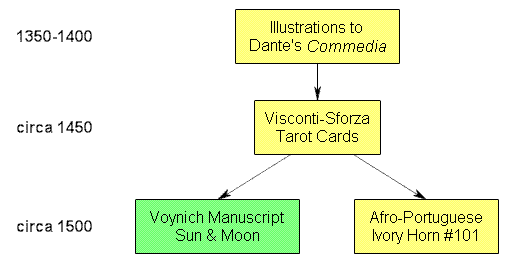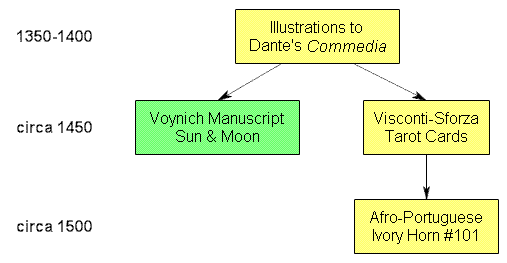Once upon a time, when I was trying to research the cryptographic history of Sforza Milan 1450-1500, it became painfully obvious that I had to build up a proper understanding of Francesco Sforza’s chancellor Cicco Simonetta: more than just a ‘gatekeeper’ or even a ‘lynchpin’, Simonetta was the very lintel above the door, the central architectural feature silently and powerfully holding the whole enterprise together.
However, for the most part histories have tended to treat Simonetta as a marginal figure, as if he was simply some gouty old henchman beavering away in the Sforza family’s shadows. Only when contemporary historians (Evelyn Welch perhaps most famously, but there are now quite a few others) began relentlessly chiselling away at the Sforza propaganda facade did Cicco become foregrounded as a useful object of study.
Despite my efforts to collate what fleeting references to Cicco I could find, he remained an elusive figure. But then I found a relatively unknown book in Italian called “Rinascimento Segreto: Il mondo del Segretario da Petrarca a Machiavelli” (2004) by Marcello Simonetta: chapters III and V covered the key people & period I was particularly interested in. The author’s surname is no coincidence: when Marcello went to Yale in 1995, his professor from the palaeography class (the very excellent Vincent Ilardi) “immediately suggested that [he] write a biography of [his] ancestor Cicco Simonetta“. Poignantly, Marcello had been born in a hospital in Pavia “only a few yards from where Cicco Simonetta was imprisoned at the end of his long life.”
I should have been delighted: but my Italian comprehension has only ever been tourist-plus, and “Rinascimento Segreto” was written in (to me) full-on academese. Yet even though reading it was a hard, hard slog, it really did have everything I needed to build up a fuller picture, as well as plenty on other related stuff (such as the Visconti, the Pazzi conspiracy, Roberto da Sanseverino, Filfelfo, and so forth). In many ways, Simonetta’s book was one of the ten or so key texts that substantially contributed to my research back then.
Since then, Marcello has been busy digging further trenches within the same Quattrocento patchwork of fields. Most notably, in 2001 he uncovered (in the Ubaldini family archive in Urbino) an enciphered letter from Federico da Montefeltro to his envoys in Rome, dating from 14th February 1478 – a mere ten weeks before the Pazzi conspiracy attack on Lorenzo and Giuliano de’ Medici. Marcello had already accumulated plenty of material implicating Federico in the whole plot: and so wondered whether this letter might be connected…
During 2002 or 2003, he therefore decided to see if he could break the letter’s cipher using only the set of “Regule” (rules) famously written down by Cicco Simonetta in his diary: these described how to break unknown ciphertexts. “After a few weeks of hard work“, Marcello was finally able to decipher it: and it revealed, just as he had inferred from other documents, that Federico da Montefeltro had indeed been utterly involved with the whole plot against the Medicis. Marcello published his results in the well-respected Archivio Storico Italiano: but it was not historians who responded in 2004, but the world’s media, bringing him a small measure of international fame: in 2005, a documentary even came out on the History Channel describing Marcello’s story.
Fast forward to 2008, and here’s Marcello’s brand new popular history book “The Montefeltro Conspiracy“, which does everything you’d expect: it tells the interlinked stories of Cicco Simonetta, Gian Galeazzo Sforza, Federico da Montefeltro, Lorenzo de’ Medici, Pope Sixtus IV, and the whole Pazzi conspiracy (and the subsequent Pazzi war), particularly focusing on the political machinations from 1476 to 1482, together with the story of the ciphered letter.
Well, that’s the making-of-the-book covered, the kind of human-interest story PR people love to feed to tame journalists (not that I’ve received a single PR release to date, let alone a review copy of anything): but what is the book actually like?
For the first 50 pages, I have to say that I really didn’t enjoy the book. To me they read like 19th century jut-jawed Italian popular histories, such as Count Pier Desiderio Pasolini’s “Catherine Sforza“. Even though I happened to love that book, it’s really not something that could be sensibly released nowadays, because sensibilities and presentation styles have moved on so far: modern history is so much better than that.
All the same, beyond that point, Marcello progressively got into the swing of it: and by about page 150, he had really got the measure of the material and the pacing, and his story was really flying. Yet the very final section appended to the structure (where he proposes a link between Botticelli’s uber-famous “La Primavera“, his “Punishment of Korah” (the fifth fresco on the walls of the Sistine chapel), and the whole Medici-Pazzi thing) just doesn’t work at all (sorry); and so the whole book ends on a bit of an historical down note, which is a shame.
Having tried my own hand at writing an accessible historical account of the mid-Quattrocento (and it is a far harder challenge than it looks), I’d put the lull of the first 50 pages down to popular writing inexperience on Simonetta’s part (trust me, he can do full-on academese just fine): so in the end, I’d still recommend his book overall as a good piece of historical writing on a fascinating era.
As an aside, an article last week by Juliet Gardiner in the Sunday Times eulogizing contemporary British historians (almost to the point of hagiography, it should be said) also criticized European historians’ writing for being too polarized between high and low culture:-
“[Richard] Evans makes the point that, on the Continent, the divide between academic and popular history is far deeper. Elsewhere in Europe, history is seen as a social science (Wissenschaft), so it tends to be written in ‘high academese’, a theoretical, technical style that is all but impenetrable to all but the committed specialist. In Britain, history is seenas a branch of literature, rather than science, and the tradition of writing narratic, empirical history, often with an emphasis on biography, provides a vivid ‘story’ that can be appreciated by the educated reader.”
I would say that “The Montefeltro Code” amply demonstrates of all these historiographical trends: yet I do look forward to further historical books by Simonetta, particularly as his popular writing style continues to improve (as it undoubtedly will).
However, when considering his book as a piece of cryptographic writing, I have a whole heap of issues. Despite the huge influence of the Da Vinci Code on the publishing trade, there are very few recent books that could genuinely qualify as both historical and cryptographic non-fiction (Simonetta’s “The Montefeltro Code” and my book “The Curse of the Voynich” are pretty much the only two I can think of right now), as long as you put the torrent of titles on the whole Enigma / Bletchley Park thing to one side.
In this context, Simonetta would have been aware that cryptography historians would take a keen interest in his book, and should therefore have checked his work accordingly. Unfortunately, this seems not to have happened.
I’ll give some immediate examples from p.26. Though his mention of “the insecure roads of Europe” is true for most cipher dispatches, my understanding is that Sforza cipher dispatches were (according to Francesco Senatore) folded up inside a littera clausa, powerfully deterring anyone from even trying to peek inside. In each cipher, Marcello says “there were about 250 random symbols, which stood for single, double, and triple characters“: actually, they stood for single letters, doubled letters, and nulls, as well as some common short words, and occasionally common consonant-vowel or vowel-consonent pairs. In fact, Cicco Simonetta’s Regule pointed out that the only Latin word with a tripled letter is “uvula” (egg), making this an even more obvious mistake (even though Cicco himself seems to have miscopied this as “mula“). “Some fifty other[ symbol]s designated people or powers“: actually, this number varied widely. “Every few months, the sets were completely changed“: I don’t think this is true at all – Tristano Sforza’s cipher was changed only after about 15 years in use, and only because of Tristano’s petulance (his old cipher wasn’t ornate enough for his position) rather than any cryptographic need. In fact, as far as I know, the only Milanese cipher of the period that was updated much was the one to Tranchedino in Florence… and so on.
All very minor and (frankly) unnecessary: but it is Marcello’s claims relating to Federico da Montefeltro’s ciphered letter that require the most careful scrutiny. In a recent email, Augusto Buonafalce flagged to me that Marcello had not made it transparently clear how he had decoded the nomenclator (the list of people/place/etc, each represented by a single symbol): and that this was central to whether his deciphering claim was cryptologically valid or not.
Certainly, when Simonetta first published his findings in 2003, he had (though this is not made clear anywhere) only guessed at the “persons and powers” code-table section of the nomenclator: many of these symbols appear in the two pages he reproduced (for example, you can see instances of c24, j6, p1, p2, p12, r1 dotted around the page). In January 2004, I suggested to him that he should examine the Urbinate Lat. 998 cipher ledger (held in the Vatican), which contains various Urbino ciphers, and pointed out that, from what I had seen, it seemed to be common practice in Urbino to reuse & extend codebooks rather than to create entirely new ones. When Marcello had a look at Urb. Lat. 998 in the summer of 2004, he was pleasantly surprised to find two symbols reused from a (then ten-year-old) cipher codebook: yet the remainder were still educated guesses on his part. Though he included two small images of the “Montefeltro Codebook” on p.91 (but with no folio reference), these are not at the level of cryptographic proof that would satisfy a Cryptologia readership: his code-table cracks were based more far on historical inferences than on cryptography.
Though Marcello took several weeks to break the cipher, it should also be pointed out that this was because Cicco’s rules were simplistic (and, I suspect, hardly ever used in practice): had Marcello passed his transcription to a cryptologer, it would probably have yielded up its secrets in mere minutes – code-table aside, it was a very simple cipher.
Ultimately, the irony of the situation is that the Sforza camp (and specifically Cicco Simonetta, I argued in my book) had provided the Montefeltro camp with far better ciphers than this since the 1440s: yet because Federico was now moving his loyalty away from Milan, the new cipher his administrators created for him was far simpler – but one unknown to his former allies.
All this points towards what I found so maddeningly annoying about “The Montefeltro Code”: that neither the cryptological methodology nor the cryptographical history were treated fairly and in context. In the end, the book presents a good historical rendering of a fascinating period with only a light dusting of crypto confetti on the surface – much as I liked its historical side (and would indeed have walked across broken glass to get a copy of it when writing my book), anyone hoping for a brilliant synthesis of that with cryptography may well come away disappointed.
 Afro-Portuguese Horn #101 (from Edith Sherwood’s site)
Afro-Portuguese Horn #101 (from Edith Sherwood’s site)



